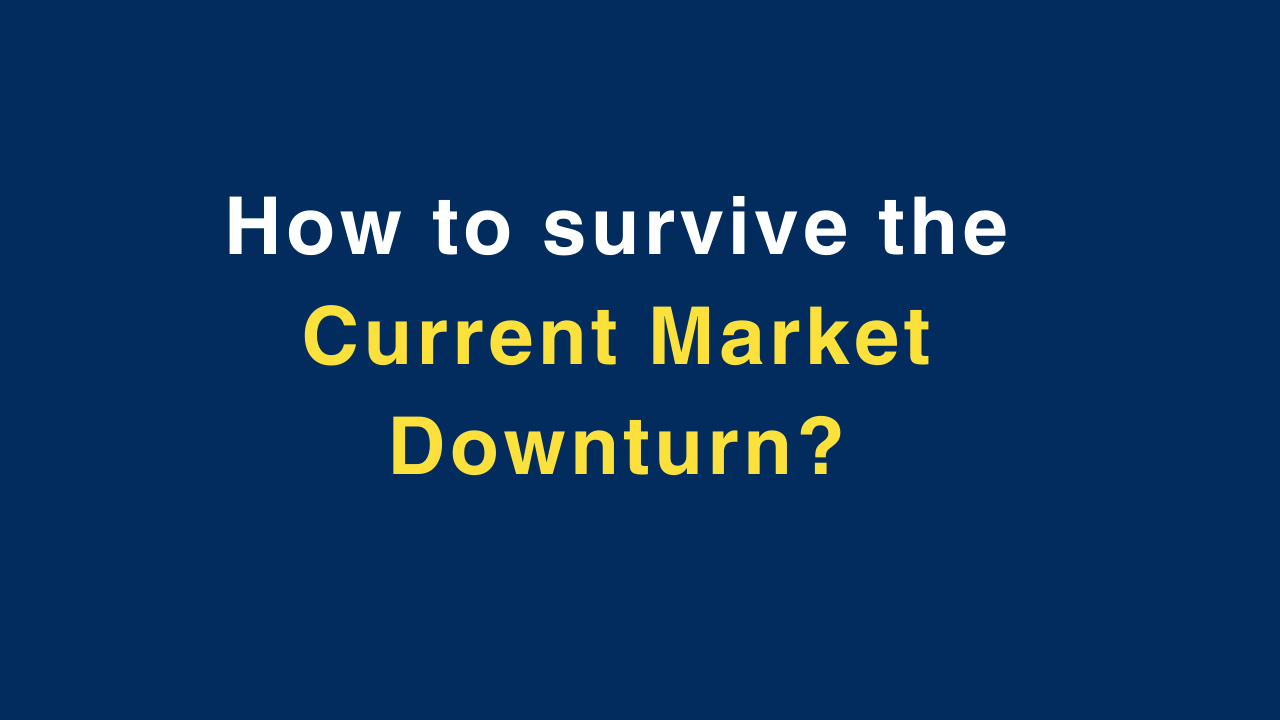Latest news & updates from us

The situation in the market is grim. Comparisons with 2008, and even 2000, have begun. Older investors, who have weathered one of those massive downturns, are likely to be better prepared emotionally. Younger investors, on the other hand, who have not witnessed such a brutal downturn before, are likely to find it more difficult to deal with. In this story, we shall discuss a few strategies that can help investors survive this severe market downturn.
The health scare: This story is being written on April 6, and there is no relief from the spate of bad news. The number of cases and the death toll—4,314 and 118 respectively—continue to rise inexorably. The situation is grimmer in countries like the US, Spain, and Italy. In India, so far, the number of cases and deaths is smaller, for our population size. But uncertainty looms. We do not know whether the lock down will end in the middle of April or will be extended. The risk of a spurt in the number of cases once the lock down ends also looms. It could well force the authorities to impose another lock down.
Economic slump: On the economic front, GDP growth projections are being continuously revised downward. Fitch Ratings, whose earlier projection said India would grow at 5.1 per cent, has now revised it to a 30-year low of 2 per cent. India is primarily a consumption-driven economy. Private consumption accounts for 60 per cent of GDP. The disruption in economic activity will, in the months that follow, translate into salary cuts and job losses, which will, in turn, affect private consumption demand very hard.
Start-ups and smaller companies have started announcing layoffs while most larger companies have only cut salaries so far. No one knows when the economic recovery will come about, and what its shape will be. Will it be V-shaped, meaning that will the pandemic scare will recede with the onset of summer, resulting in a sharp resumption in economic activity, spurred by pent-up demand? Or will the recovery be U-shaped, meaning that after touching the bottom, the economy will operate at a lower level for a considerable period of time, before the level of activity begins to rise again? Or will the recovery be W-shaped, meaning that the economy may recover, only to falter once again as the inability to contain the pandemic results in more lock downs in the future?
Market has taken a hard knock: The free fall in the market continues. In March, the Sensex fell 22 per cent; the mid-cap index, 27 per cent; and the small-cap index, 29 per cent. The FMCG sector has proved to be the most resilient—it fell only 6.26 per cent in March. Banking (33 per cent) and Realty (35 per cent) were the most vulnerable last month.
One of the key factors responsible for the bearish sentiment in the markets is the relentless withdrawal of funds by foreign institutional investors (FIIs). They withdrew Rs. 58,632 crore from the Indian equity market and Rs. 58,111 crore from the debt market in March.
What can you do?
Even if you’re not particularly religious, pay heed to the essence of the idea behind the Serenity prayer: “God, give us the grace to accept with serenity the things that cannot be changed, the courage to change the things that can be changed, and the wisdom to know the difference.”
The pandemic, the economic and market downturn, et cetera are not within your control, so it is futile to worry about them. Take the necessary health-related precautions (in terms of social distancing, using masks and sanitisers, et cetera) for your family and yourself. If you are lucky enough to be in an occupation where you can work from home, continue to toil with the same level of diligence and purpose that you display in the office. If you can’t work, then use your time to read the right books, learning a new skill, and spend quality time with your family. And if you manage your investment portfolio yourself, devote your time to scanning it for vulnerabilities.
Remove leverage from your portfolio: Scan your existing portfolio of stocks closely for leverage. Companies that are in debt are more likely to go bankrupt than those that are debt-free. As revenue dries up, but interest costs still have to be paid, the leveraged companies have a greater probability of getting into trouble. In case you have such players in your portfolio, remove them – even if it means suffering a loss.
Concentrated players are at risk: There could be smaller companies in your portfolio that carry high concentration risk. They may be overdependent on a single product, a single customer, a single market, or a single factory for outsourcing their produce. Such companies are at greater risk. Exit them and replace them with larger, more diversified companies.
Consider defensives: If you wish to create a more defensive portfolio until the mayhem ends, consider sectors like fast-moving consumer goods (FMCG), pharma and utilities.
Dig for value: Value is beginning to emerge across the market, in virtually every sector. The key when investing from a long-term perspective of three-four years is to look for stocks that have the ability to survive this downturn and bounce back once the economic recovery happens. Given the demographics of the country – the median age of the population is 27 years only – demand is bound to grow over the years in a number of sectors like financials and consumer discretionary as more youngsters join the workforce and the average level of income rises.
If you adopt this perspective, then even though the banking and financial services sector is among the worst-hit at present, it offers attractive opportunities for long-term investors. The bigger picture in banking is that private banks are much more efficient and service-oriented than public-sector banks, and hence have been gaining market share at the expense of the latter. However, valuations of quality private sector banks are usually very high in ordinary market conditions. The current downturn, however, has brought many of them to attractive levels, where they present an opportunity for even a value-oriented investor to buy them.
Ensure two things before you buy a private sector bank’s stock. One, its capital adequacy ratio should be high so that it does not have to resort to market borrowings in the current conditions. And two, it should have displayed high risk-management abilities in the past. In other words, the bank should have displayed the ability to expand its balance sheet without a spike in non-performing assets (NPAs).
The automobile sector is also looking attractive from a valuation perspective. This sector has witnessed low growth for the past year or so due to a slowing economy. But many of these automobile companies are cash-rich. They, therefore, have the strength to survive this downturn.
Avoid personal leverage: Those who have emergency funds for 6-12 months are well placed. Even if they lose their jobs, they will be able to survive. Those who are without loans are also better placed in the current circumstances. Often, it is the need for cash that drives people to sell their equity holdings in such market conditions. By doing so, they convert their paper losses into real losses. On the other hand, people who are sitting on cash have a once-in-a-decade opportunity to invest in stocks at attractive valuations, and earn high profits once the markets bounce back.
Don’t try to time the markets: Many investors believe they can time their entry and exit from the markets to perfection and thereby profit from such moves. In a declining market, many investors are known to sell even the blue chips in their portfolio, confident in the belief that they will be able to buy them back at a lower price. But market bottoms are difficult to predict. Often, the market bounces back even while sentiment in the market is depressed, depriving punters of the opportunity to implement their plans.
If you have cash and are looking to deploy it, do not hunt for the perfect price. The market is already 22-30 per cent down over the past month and is offering attractive valuations. If you have found a quality stock, start purchasing it in tranches, so that you are able to average out the cost of purchase over the next few months.
Think largecap investing, think Exchange Traded Funds
20 July 2024
How to build a multi-asset portfolio using ETFs
28 June 2024
Factor ETFs: Why you should invest for long-term returns
19 June 2024

Simply fill the details, connect your bank account & upload your documents.
Open An Account
Post a comment